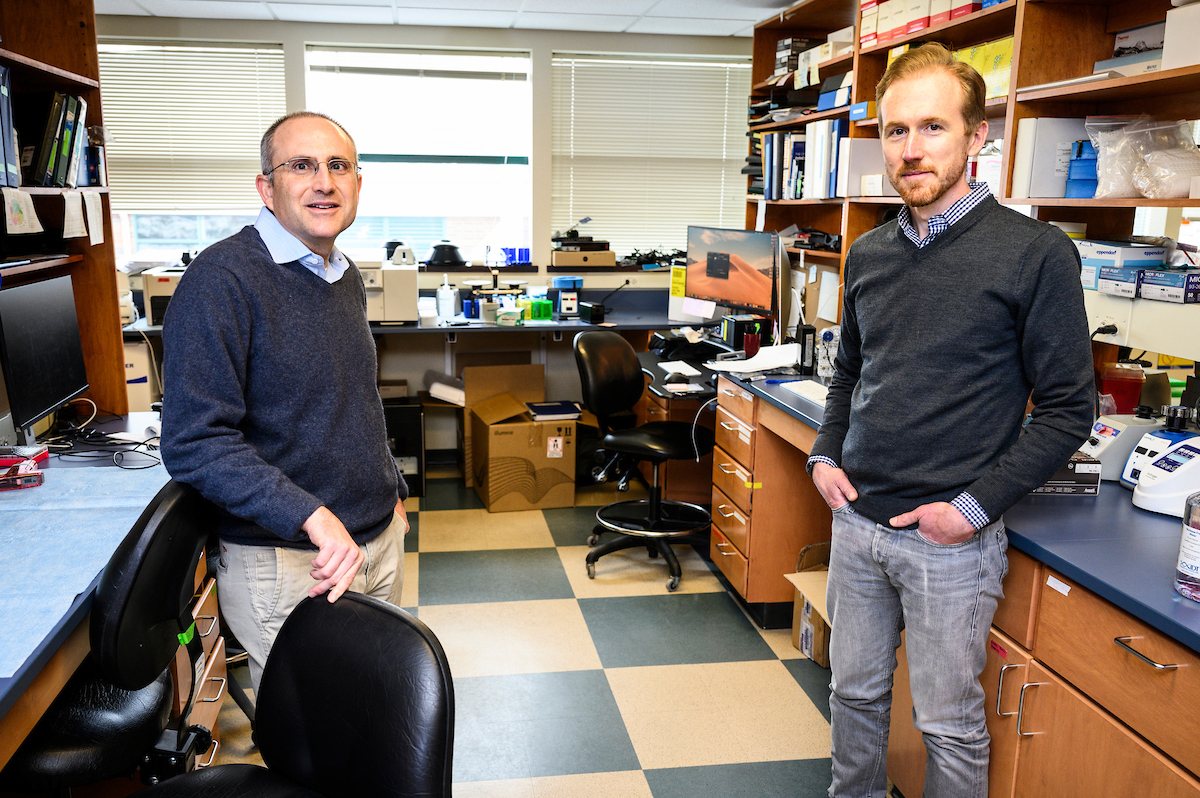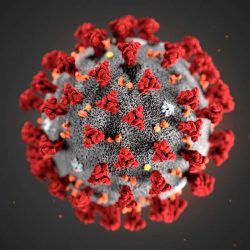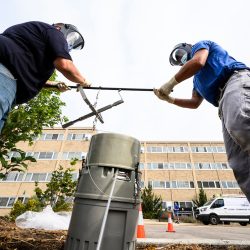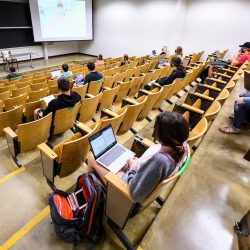Scientists Zero in on COVID-19
UW researchers on campus and beyond search for a cure.

From the outset of the pandemic, David O’Connor (left) and Thomas Friedrich began parsing the genetic sequences of virus samples from patients. Jeff Miller
The COVID-19 pandemic has drawn the attention of UW–Madison scientists in all corners of campus: geographers mapping the movement of people, mathematicians modeling the spread of the virus, and communications researchers testing ways to deliver public health messages. It even stretched to the South Pole, where IceCube Neutrino Observatory scientists donated the computing power they use for astrophysics calculations to study proteins in novel coronavirus infections.
Prominent virology labs got an early start. Working toward a vaccine with Madison-based FluGen, UW professor of pathobiological sciences Yoshihiro Kawaoka has been studying how SARS-CoV-2 is transmitted and causes COVID-19. A study of hamsters showed the animals develop infections deep in their lungs with severe damage similar to human patients. Importantly, infected hamsters developed antibodies protecting them against future infection and responded well to treatment with antibodies from the blood of other hamsters that had been infected.
“This shows us that convalescent sera, still experimental in human patients, may be part of an effective treatment for COVID-19,” Kawaoka says.
UW Health and the School of Medicine and Public Health have been studying that very treatment, joining dozens of research sites testing whether newly infected patients improve with transfusions of antibody-rich blood plasma from COVID-19 survivors. Infectious disease specialist David Andes has also led a UW–Madison group in a trial of a drug, ruxolitinib, meant to quell the “cytokine storm,” a dangerous overreaction of the immune system sparked by the virus in many patients. Lisa Arkin, assistant professor of dermatology and pediatrics, is studying “COVID toes,” trying to understand why the disease causes bruise-like blisters and bumps on the toes of children.
From the outset of the pandemic in Wisconsin, David O’Connor and Thomas Friedrich ’97, PhD’03 of UW–Madison’s AIDS Vaccine Research Laboratory began parsing the genetic sequences of virus samples from patients. They found that limiting travel was working in Wisconsin, as Madison and Milwaukee outbreaks were unrelated. Most of Madison’s infections involved versions of the virus introduced from Europe, and Milwaukee’s largely grew from versions of SARS-CoV-2 introduced from Asia.
O’Connor, Friedrich, and medical school professor David Beebe ’87, MS’90, PhD’94 are now working on a saliva test for the virus.
Published in the Fall 2020 issue



Comments
No comments posted yet.